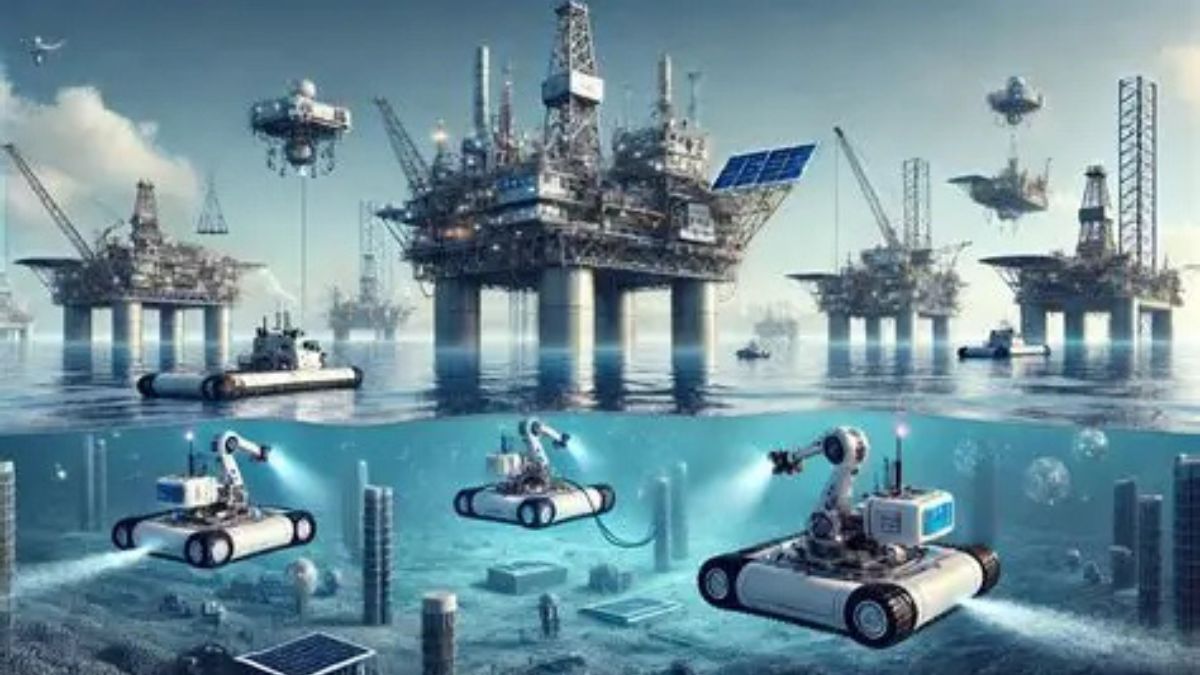Deep offshore technology refers to the advanced engineering and operational methods used to explore and extract oil and gas reserves located in ultra-deepwater environments, typically at depths exceeding 1,000 feet (305 meters) and sometimes reaching 10,000 feet (3,048 meters) or more. As shallow-water reserves deplete, the energy industry is increasingly turning to deepwater and ultra-deepwater fields to meet global energy demands.
This article explores the latest advancements in deep offshore technology, the challenges faced by the industry, and the future of deepwater exploration and production.
Why Deep Offshore Technology Matters
With over 60% of the world’s undiscovered oil and gas reserves located in deepwater and ultra-deepwater regions, deep offshore technology plays a crucial role in global energy security. Key reasons for its importance include:
-
Declining Onshore and Shallow-Water Reserves – Many conventional oil fields are nearing depletion, pushing exploration into deeper waters.
-
High Energy Demand – Growing global energy consumption necessitates tapping into deepwater reserves.
-
Technological Advancements – Innovations in drilling, subsea systems, and robotics make deepwater extraction feasible.
-
Economic Viability – Despite high costs, deepwater projects can yield massive returns due to large reservoir sizes.
Key Technologies in Deep Offshore Exploration and Production
1. Floating Production Systems
Unlike fixed platforms used in shallow waters, deep offshore operations rely on floating structures, including:
-
Floating Production Storage and Offloading (FPSO) Units – Convert extracted oil and gas into storable products while operating in remote locations.
-
Semi-Submersible Platforms – Floating rigs with stability for drilling and production in harsh deepwater conditions.
-
Spar Platforms – Deep-draft cylindrical structures ideal for ultra-deepwater stability.
-
Tension Leg Platforms (TLPs) – Moored to the seabed with vertical tendons, minimizing movement.
2. Subsea Production Systems
Deepwater extraction requires sophisticated subsea infrastructure:
-
Christmas Trees – Control the flow of oil and gas from wells.
-
Manifolds – Direct hydrocarbons from multiple wells to a single pipeline.
-
Subsea Processing – Separates oil, gas, and water at the seabed to reduce surface facility loads.
3. Advanced Drilling Technologies
-
Dynamic Positioning Systems (DPS) – Keep drillships stable in deep waters without anchors.
-
Managed Pressure Drilling (MPD) – Prevents blowouts by maintaining precise wellbore pressure.
-
Extended Reach Drilling (ERD) – Accesses reservoirs far from the drilling location.
4. Remote Operated Vehicles (ROVs) and Autonomous Underwater Vehicles (AUVs)
-
ROVs – Tethered robots perform inspections, repairs, and maintenance at extreme depths.
-
AUVs – Unmanned vehicles conduct seabed mapping and pipeline inspections autonomously.
5. Digitalization and AI in Deepwater Operations
-
Predictive Maintenance – AI analyzes equipment data to prevent failures.
-
Digital Twins – Virtual replicas of offshore assets optimize performance.
-
Real-Time Monitoring – Sensors and IoT devices enhance safety and efficiency.
Challenges in Deep Offshore Technology
Despite technological advancements, deepwater operations face significant hurdles:
1. Extreme Environmental Conditions
-
High pressure, low temperatures, and strong underwater currents increase operational risks.
2. High Costs and Investment Risks
-
Deepwater projects require billions in investment with long payback periods.
3. Technical Complexities
-
Deeper waters demand more robust materials and engineering solutions.
4. Environmental and Regulatory Concerns
-
Oil spills in deepwater (e.g., Deepwater Horizon) pose catastrophic risks, leading to stricter regulations.
5. Workforce and Safety Challenges
-
Remote operations require highly skilled personnel and stringent safety protocols.
Future Trends in Deep Offshore Technology
1. Enhanced Subsea Robotics
-
More advanced ROVs and AUVs with AI-driven decision-making capabilities.
2. Electrification and Green Technologies
-
Offshore wind integration and hybrid energy systems to reduce carbon footprints.
3. Expansion into Ultra-Deepwater Frontiers
-
Exploration beyond 10,000 feet with next-gen drilling rigs.
4. Digital Transformation
-
Increased use of blockchain for supply chain transparency and big data analytics for reservoir management.
5. Floating Liquefied Natural Gas (FLNG) Facilities
-
Enabling LNG production directly at offshore fields.
Conclusion
Deep offshore technology continues to evolve, enabling access to previously untapped energy reserves. Despite challenges like high costs and environmental risks, innovations in subsea systems, robotics, AI, and floating production are driving the industry forward. As the world transitions toward sustainable energy, deepwater operations will remain vital in meeting global oil and gas demands while integrating cleaner technologies.
The future of deep offshore technology lies in smarter, safer, and more efficient solutions that balance energy needs with environmental responsibility.











